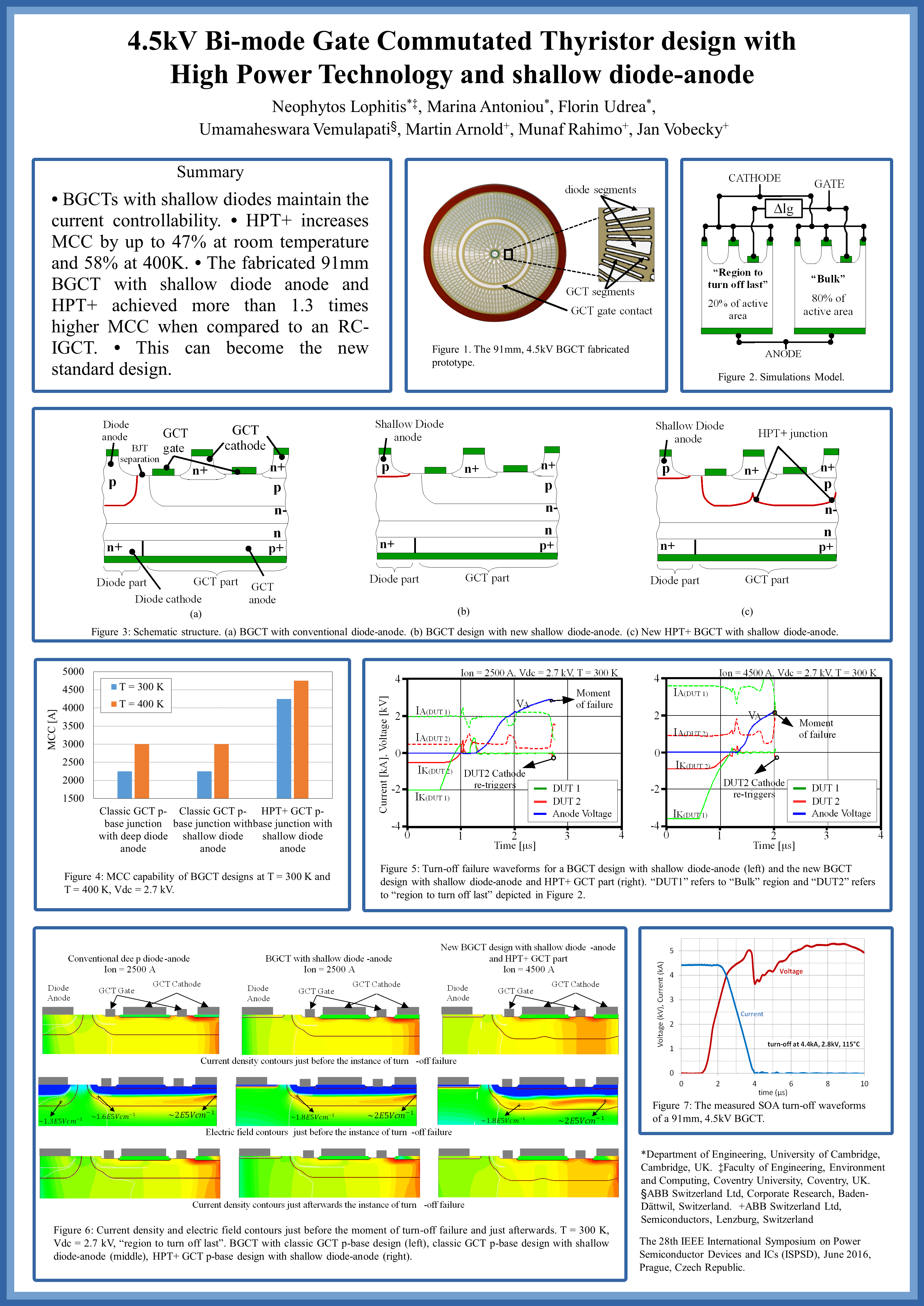The following paper has been accepted for presentation at the 2017 IEEE 5th Workshop on Wide Bandgap Power Devices and Applications, 2017. The conference will take place in Hyatt Regency Tamaya Resort, Albuquerque, NM USA
S. Perkins, A. Arvanitopoulos, K. N. Gyftakis, and N. Lophitis, “A Comprehensive Comparison of the Static Performance of Commercial GaN-on-Si Devices,” in 2017 IEEE 5th Workshop on Wide Bandgap Power Devices and Applications, 2017.
Summary:
This work presents a comprehensive and experimentally derived comparison of the static performance of commercial Gallium Nitride on Silicon (GaN-on-Si) devices and references their performance against a state-of-the- art Si Super-Junction (S-J) device. The Panasonic PGA26C09DV Enhancement mode (E-mode) p-GaN layer Gate Injected Transistor (GIT) and the Transphorm TPH320 series composite cascode GaN High Electron Mobility Transistor (HEMT) have been analysed and the experimental results illustrate typical performance characteristics of the different device technologies. Their experimental performance characteristics have been validated, explained through literature and application considerations have been stated.





